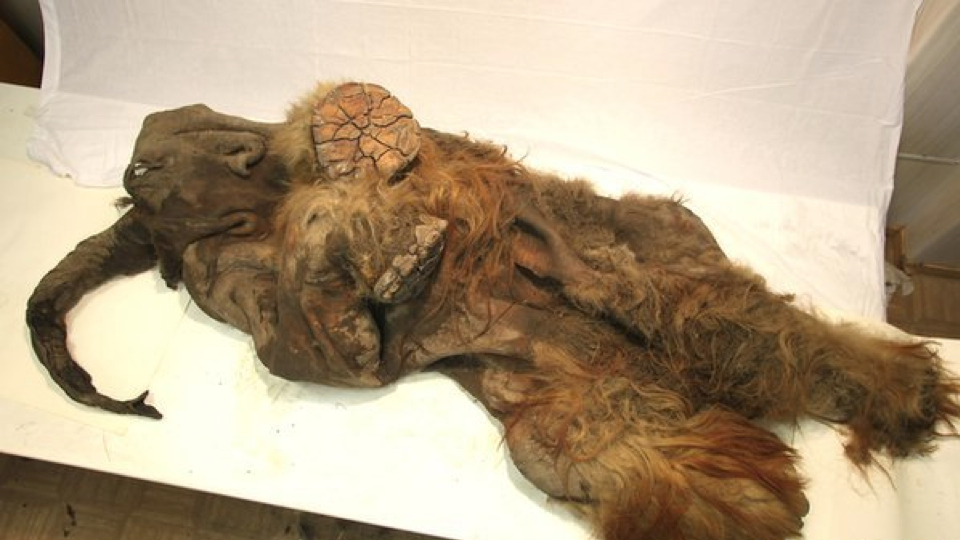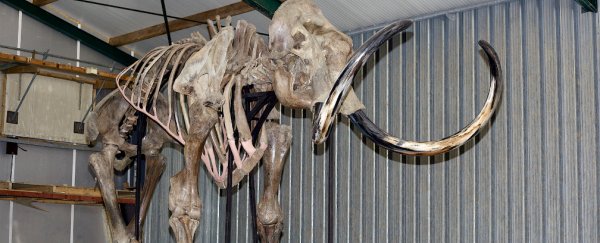During the last Ice Age, woolly mammoths roamed the frozen tundra between England and Holland - an area that is now covered by the North Sea. Archaeologists have now managed to recover a complete mammoth skeleton from its resting place here 30 metres below the water.
Collected over the past two years by North Sea Fossils, a Netherlands-based team of archaeologists and palaeontologists, the 3.4 metre-tall skeleton has been carbon dated to 40,000 years old.
As the Telegraph reports, the team first found the skull and tusks of the individual mammoth back in 2012, and since then have been buying fossils dredged up by professional fishers from the North Sea, as well as conducting their own expeditions, in order to piece together the full skeleton.
"It took a couple of trips. We started with the skull and then found little ones to replace those that were missing," Markus Broch, who works at North Sea Fossils, told the Daily Mail.
The team also uncovered bones that belonged to woolly rhinos and Irish elks, along with the skull of a prehistoric European bison, the Daily Mail reports.
"Because we see so many fossils we work very closely with the leading experts in the field, such as Dick Mol, who is the world's leading authority on mammoths," Broch told the Dail Mail.
However, he admits that while small bones and fossils are quite common to find, it's still "extremely rare" to find and then assemble a complete fossil, in particular, the skull and tusk bones.
"We have assembled a number of complete skeletons of mammoths, something very few companies in the world can do," said Broch.
It's also quite lucrative - a complete mammoth skeleton sold just a few weeks ago for $300,000 to a private collective.
Scientists are also on a mission to clone a mammoth using preserved DNA, so there's more interest in finding remains of the species than ever before.
While a full skeleton is impressive, back in 2012, scientists found one of the most well-preseved mammoths ever, complete with skin and fur, frozen in the steppes of Sibera.
 Flatreille/Mammuthus/MCE
Flatreille/Mammuthus/MCE
That past, it seems, is still around us, just waiting to be uncovered.
Source: io9, The Telegraph, Daily Mail
